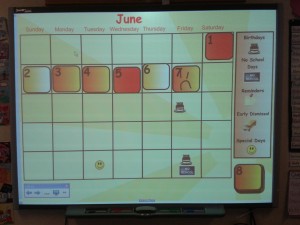Above you will see a picture of one of the sweetest gestures my students did for me while I was on my ten-week practicum.
It was my last week at practicum and I decided to put a Special Day icon (a happy face) on my last day in the classroom on our calendar. On the first day of the month a student pointed out the happy-face and asked why it was there. When I explained that I put it there since it would be my last day in the classroom the student answered with, “That’s wrong Danielle!”. I inquired further as to what they meant and they explained that it shouldn’t be a happy face, it should be a sad face since they would all be sad that I was leaving. They immediately took away the happy face and drew a sad face on my final day.
I have a deep sense of caring for all of my students and that often results in them having a deep care for me. This sense of mutual respect and fondness has always been at the core of my work with youth. This year I was able to gain an understanding in how I can use this in a formal education setting. I’ve learned that by valuing and caring for all of my students I can create a classroom of learners who respect me and each other. A classroom that “feel(s) connected on a more equal level, instead of hierarchically” (Sugata Mitra’s SOLE Toolkit).
Moving forward I know that valuing and caring for all of my students will be an important part of my teaching practice.

